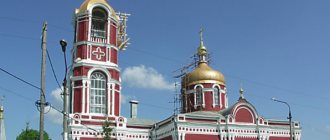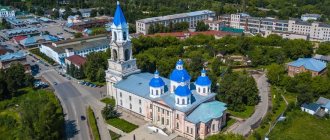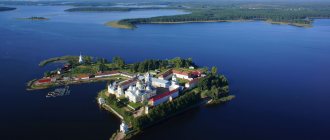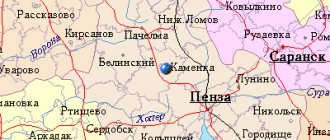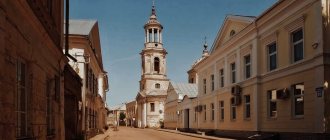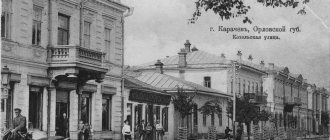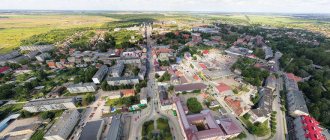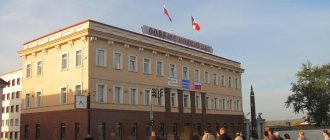City in Tver region, Russia
| Zubtsov Zubtsov | |
| Town[1] | |
| Zubtsov in winter | |
| Flag Coat of arms | |
| Location of Zubtsov | |
| Zubtsov Location of Zubtsov Show map of Russia Zubtsov Zubtsov (Tver region) Show map of Tver region | |
| Coordinates: 56°11′N 34°37'E / 56.183°N W. 34.617°E / 56.183; 34.617Coordinates: 56°11′N 34°37'E / 56.183°N W. 34.617°E / 56.183; 34.617 | |
| A country | Russia |
| Federal subject | Tver region[1] |
| Administrative region | Zubtsovsky district[2] |
| urban village | Zubtsov[2] |
| First mention | 1216[3] |
| Height | 170 m (560 ft) |
| population (2010 Census)[4] | |
| • General | 6,927 |
| • Evaluate (2018)[5] | 6,300 (-9.1%) |
| Administrative status | |
| • Capital from | Zubtsovsky district[6], urban-type settlement Zubtsova[2] |
| Municipal status | |
| • Municipal district | Zubtsovsky municipal district[7] |
| • Urban village | Zubtsovskoe urban settlement[7] |
| • Capital from | Zubtsovsky municipal district[7], Zubtsovskoye urban settlement[7] |
| Timezone | UTC + 3 (MSK [8]) |
| Postal code(s)[9] | 172332, 172333 |
| OKTMO I WOULD | 28618101001 |
| Web site | www.city-zubtsov.RU |
Zubtsov
(Russian: Zubtsov) is a town and the administrative center of Zubtsovsky District in Tver Oblast, Russia, located at the confluence of the Volga and Vazuza Rivers, 153 km (95 mi) south of Tver, the administrative center of the region. Population: 6,927 (2010 Census);[4]7,430 (2002 Census);[10]7,630 (1989 Census);[11] 8,100 (1998 estimate).
Story
Zubtsov was first mentioned in the chronicle in 1216[3] Thanks to its location on the Volga, it controlled one of the trade routes from the Varangians to the Greeks.[12] In middle age, it was a border fortress of the Tver Principality. Between 1318 and 1460 The Zubtsov Principality existed with a seat in Zubtsov. Subordinated to the Tver Principality. In 1460 it was abolished and annexed to the Tver Principality. The Grand Duchy of Moscow annexed it to the rest of the Tver Principality in 1485.[13] Subsequently, the city was important mainly as a flax trading market. Its neoclassical style cathedral was built in 1801.
During the administrative reform carried out in 1708 by Peter the Great, Zubtsov entered the Ingermanland Governorate (from 1710 - St. Petersburg Governorate), and in 1727 the Novgorod Governorate broke away. In 1775, the Tver governorate was formed from lands that previously belonged to Moscow and the Novgorod province, and the territory was transferred to the Tver governorship, which in 1796 was transformed into the Tver province. In 1775, Zubtsovsky district was created, with its center in Zubtsov. On May 30, 1922, Zubtsovsky district was abolished and merged into Rzhevsky district.[14]
On July 12, 1929, the provinces and districts were abolished, and the Zubtsovsky district was formed with the administrative center in Zubtsov. It belonged to the Rzhev district of the Western region.[15][16] On August 1, 1930, the districts were abolished, and the districts were subordinated directly to the region. On January 29, 1935, the Kalinin region was formed, and the Zubtsovsky district was transferred to the Kalinin region.[14][15]
During World War II, the city was occupied by German troops from October 11, 1941 to August 23, 1942 and was almost razed to the ground. This was the site of fierce fighting - the Battle of Rzhev. About 15 thousand Red Army soldiers are buried at the Zubtsov memorial. The city was revived after the Vazuza Reservoir project was started in the 1970s. Currently, the reservoir provides Moscow with a quarter of its drinking water.
In February 1963, during Nikita Khrushchev's failed administrative reform, Zubtsovsky district was merged with Rzhevsky, but was recreated on January 12, 1965.[14] In 1990, the Kalinin region was renamed the Tver region.[16]
Sad pages of the history of the city of Zubtsov
Author: Vitaly Serdyuk
Hello dear readers!
Since ancient times, the Zubtsovsky lands of the Tver region belonged to the Tver princes. The first mention of the city of Zubtsov in ancient chronicles dates back to 1216. But archaeological excavations confirm the settlement of this region much earlier.
A long time ago, the Slavic Krivichi tribes came to the picturesque banks of the Volga and Vazuza rivers. Archaeologists find in these places, at the mouth of the Vazuza, numerous mounds with burials of ancient people. In the development of Tver lands, the main role was played by the Krivichi and Slovenes. The Krivichi always buried their relatives in special tombs, long mounds. The dead were burned at the stake, after which the vessel with the ashes was buried in mounds, the shape of which lengthened with each burial. Later, the burial mounds changed shape, becoming much smaller and more rounded.
Once upon a time, ships traveled along the Volga and Vazuza rivers to trade with neighboring settlements. Also, these lands were constantly the subject of disputes and civil strife. In ancient times, after the formation of the Kyiv state, there was a waterway along the Vazuza River connecting the Dnieper region with the Upper Volga.
In the first years of the 13th century, the Novgorod prince Mstislav attacked the domain of the Vladimir prince and took the city of Zubtsov. Then, already in 1237-1238, Zubtsov suffered from the devastating raids of the Mongol-Tatars. The invaders burned and plundered houses and churches, left no icons or vessels, captured people in crowds into captivity or slaughtered them.
7 years later the city was captured once again, this time by the Lithuanians. In the 14th-15th centuries, the city was a small defensive fortress surrounded by an earthen rampart and a moat. Observation towers were installed along the perimeter of the wooden walls.
During the struggle between the two strong principalities of Moscow and Tver, Zubtsov became a “bone of discord” between the Moscow prince Dmitry and the Tver prince Mikhail. In 1375, Dmitry's army (later called Donskoy) captured and completely burned the city, capturing almost all the townspeople. The ally of the Tver prince, the Lithuanian prince Olgerd, was afraid to speak out against Dmitry. It is known that Dmitry’s reign was characterized by irreconcilable wars, sometimes with the Tver princes, sometimes with Ryazan and Lithuania. Only after the conclusion of an unfavorable peace for Tver, the city of Zubtsov was returned to the Tver principality.
Half a century later, Zubtsov became the center of an appanage principality. This event happened in 1425. Trade and various crafts developed in the city, and the city population increased. Serf farms and estates of nobles, monastery estates arose in the district in the 16th century.
The oppression of serfdom and the half-starved existence of the people caused peasant unrest and riots. The most noticeable was the uprising under the leadership of Ivan Bolotnikov, who was a native of Zubtsovsky district. Thousands of peasants swore allegiance to Bolotnikov, with a great desire to deal with their exploiters.
In 1605, during the Time of Troubles, Zubtsovsky district was attacked and completely destroyed by Polish invaders. Previously, a fairly large city, at that time, was plundered, and most of the residents never returned to Zubtsov.
Zubtsov retained the significance of a small border fortress until the end of the 17th century. In connection with the commissioning of the Vyshnevolotsk Canal, it becomes a convenient transshipment point on the way to the northern capital. Caravans of ships with bread, meat, flax, linen and other goods follow to St. Petersburg. In addition to the river route, two Yamsk roads to Gzhatsk and Sychevka passed through the city.
This also contributed to the development of trade. Zubtsov's merchants bought hemp, leather, and bread in the neighboring Smolensk province, and successfully sold them in St. Petersburg. The commercial importance of the city clearly prevailed over the industrial one in the first half of the 18th century.
I will be glad to see your comments.
Best regards, Vitaly Serdyuk
Culture and recreation
Zubtsova contains four cultural heritage monuments of federal significance and an additional twenty-two objects classified as cultural and historical heritage of local significance. Federal monuments include the Assumption Cathedral, as well as an archaeological site and two World War II monuments.[18]
The Zubtsovsky District Museum, opened in 1988 and located in Zubtsov, presents collections of local importance, including historical and archaeological collections.[19]
COAT OF ARMS of the municipal formation of the Tver region "Zubtsovsky district"
The coat of arms of the region is a golden shield with eight visible scarlet pointed teeth.
Coat of arms of the urban settlement - the city of Zubtsov
The city's coat of arms is a scarlet shield with eight visible golden pointed teeth.
The urban settlement includes the city of Zubtsov
Head of the city: Ruslan Petrovich Vasiliev, tel. 2-10-70
COAT OF ARMS of the municipal formation "Zubtsovskoe rural settlement"
The composition of the coat of arms reflects a geographical feature: the lands of the Zubtsovsky rural settlement are washed on three sides by the waters of the Volga River
The Zubtsovsky rural settlement includes the following villages: Aladino, Annino, Batino, Bezgachevo, Besikino, Boguslovo, Borki, Brychevo, Varyushino, Deribino, Dubakino, Zaprudnevo, Kashentsevo, Koptevo, Kostino, Myakishevo, Pestovo, Volga region, Stolipino, Chernikovo, Sharlaevo, Yurkino, Aleksino, Asuzhnovo, Bobrovo, Bolotovo, Bolshoye Pishchalino, Isakovo, Karamzino, Kolesnikovo, Maloye Pishchalino, Troitskoye, Babilovo, Zuevo, Lunevo, Maslova Gora, Matyukovo, Ozhibokovo, Parshino, Pashutino, Porozhki, Sosunkovo, Cherenkovo, Apolevo, Borki , Vygodovo, Garmonovo, Davydkovo, Zenovskoye, Kurkovo, Lyushino, Mikhalki, Mozgovo, Molozvino, Slabtsovo, Snovidovo, Kharkino and the Aristovo railway crossing.
The head of the settlement is Antonets Valery Viktorovich, tel. 2-26-79
COAT OF ARMS of the municipal entity "Vazuz rural settlement"
In the center of the composition of the coat of arms is a princely crown, which indicates that the territories of the Vazuz rural settlement were the center of the appanage Fominsk principality. At the bottom of the composition is the symbol of the Vazuz hydraulic system.
The Vazuzsky rural settlement includes the following villages: Bernikovo, Bubnovo, Grigorovo, Zubovo, Igubnovo, Kargashino, Karpovo, Kozlovo, Kuzminovo, Logvino, Nikolskoye, New Karganovo, Pishchalino, Sergovskoye, Staroe Karganovo, Timonino, Chichakovo, Shirkino, Abramkovo, Gusevo, Zhdanovo, Kazarkino, Koskovo, Krasnovo, Pokrov, Ryltsevo, Trostino, Borshchevo, Verigino, Gnezdilovo, Korotnevo, Logovo, Luchkovo, Markovo, Fomino-Gorodishche, Shchekoldino, Batakovo, Vysokino, Golovkovo, Ivashkovo, Korovkino, Kostino, Koshelovo, Kryukovo, Maloe Korobino, Mozzharino, Nazarkino, Naryadovo, Nefedyevo, Panyukovo, Poddubnoe, Steklyatino, Strelnikovo, Chunegovo, Yaikovo, Gorshkovo, Zolotilovo, Ignatovo, Istratovo, Karamzino, Kovshovo, Kulshevo, Leskovo, Lukovnikovo, Novoselovo, Pechery, Shapino and railway . Bartenevo junction.
The head of the settlement is Vladimir Ivanovich Tsuba, tel. 2-20-31
COAT OF ARMS of the municipal formation "Dorozhaevskoe rural settlement"
The composition of the coat of arms reflects the presence on the territory of the settlement of a large number of estates and temples erected by Prince S.B. Kurakin. A noticeable feature of most buildings was the rotunda. This form of architectural structure emphasizes the cultural dominant.
The Dorozhaevsky rural settlement includes the following villages: Bereznikovo, Volosovo, Dorozhaevo, Kulotino, Ozeretskoye, Khlopovo Gorodishche, Vershino, Glebovo, Kalachevo, Kovrigino, Korshikovo, Koskovo, Leonovo, Leshchikhino, Oshurkovo.
The head of the settlement is Grishanova Valentina Gennadievna, tel. 3-51-38
COAT OF ARMS of the municipal formation "Knyazhyegorsk rural settlement"
The main color of the coat of arms is purple - a symbol of princely dignity and power. The design of three mountains in a purple field reflects the name of the settlement.
The Knyazhyegorsk rural settlement includes the following villages: Buevo, Red Hill, Kuzminka, Strelki, Shosha, Blaginino, Bolotovo, Dubrovka, Zhukovo, Zelenkovo, Mereikino, Rusakovo, Saurovo, Yakutino, Bezumovo, Zhitnovo, Red Garden, Kuchino, Mashutino, Nikolo- Pustyn, Selyaevo, Tupitsyno and the village of Knyazhye Gory.
The head of the settlement is Vavilova Lyubov Sergeevna, tel. 3-11-37
COAT OF ARMS of the municipal formation "Pogorelskoe rural settlement"
The composition of the coat of arms is based on the existing coat of arms of Pogorely Settlement, known from heraldry monuments since the end of the 19th century.
The Pogorelsky rural settlement includes the following villages: Aleksandrovka, Bolsunovo, Botino, Vakhnovo, Durnevo, Zheludovo, Zolotilovo, Karabanovo, Kopylovo, Korchmidovo, Novosovo, Petrovskoye, Pochurino, Revyakino, Rovnoye, Staroye, Shevtsovo, Belkovo, Voskresenskoye, Gorlovo, Dmitrovo, Ivantsovo, Ivankovo, Konkovo, Orlovka, Sidorovka, Vasilyevskoye, Denisovo, Ivanovskoye, Matyugino, Novoe, Semenovskoye, Akulino, Annino, Voskresenskoye, Gubinka, Denezhnoe, Kondrakovo, Korshikovo, Myakotino, Novoe Ustinovo, Praslovo, Staroye Ustinovo, Fedorovskoye, Yuryevskoye, Kurkovo junction, Pogoreloye Gorodishche village, settlement Grain receiving enterprise, Obovrazhye railway crossing.
The head of the settlement is Tatyana Mikhailovna Lukashova, tel. 3-33-61
COAT OF ARMS of the municipal formation "Stolipinskoe rural settlement"
The green shield features an elevated golden chipped extremity. This composition reflects the uniqueness of the landscape complex - a unique canyon from the Ice Age, which is a famous natural monument.
The Stolipinsky rural settlement includes the following villages: Vashutino, Zaborovo, Kolchevatiki, Luzhki, Myamlino, Nikiforovskoye, Novoe, Sablino, Selivantsevo, Stolipino, Ustye, Shishkovo, Aboleshevo, Annino, Bykovo, Vlasyevo, Dobrynino, Dorofeevo, Zhelnino, Kalachevo, Mitino, Mishino, Motilovo, Plyusninskoye, Pylnikovo, Salino, Sinitsino, Stupino, Cherkunovo, Yurino.
The head of the settlement is Tsvetkova Zinaida Vasilievna, tel. 3-17-34
COAT OF ARMS of the municipal formation "Ulyanovsk rural settlement"
The composition of the coat of arms reflects the rich hunting grounds and the antiquity of the settlement, on the territory of which fierce battles took place more than once.
The Ulyanovsk rural settlement includes the following villages: Abutkovo, Belyanki, Yuolshoe Kobyakovo, Dalneye, Lukyanovo, Maksimkovo, Maloe Kobyakovo, Ozeryanki, Popailovo, Romushkovo, Ryabinki, Ulyanovo, Chibichkino, Yurkino, Belavino, Beloglazovo, Bukino, Golovino, Gostovnya, Shepelevo, Yagodino, Aleksandrovka, Balashkovo, Zemlyrob, Kashentsevo, Polukhtino, Starye Gorki, Good.
The head of the settlement is Lyubov Borisovna Kostina, tel. 3-64-79
Interesting places
There are quite a lot of interesting places in the city. And if you plan your trip in advance, you can see a lot. Moreover, it is not necessary to have a huge amount of money with you.
Lake Brosno and chapel
If you believe the legend, then in the water of the lake there is a reptile-dinosaur, whose name is Brosni. This place attracts the younger generation because you can pitch a tent or have a picnic nearby. In summer you can swim, as the water warms up from the beginning of July and remains warm until the end of August. The second attraction of the place is the ocean herring that lives here. Hundreds of fishermen come to the lake every year with boats to catch fish that are rare for the Tver region.
Another attraction is the chapel . On August 10, 2012, the Orthodox Church celebrated the day of remembrance of one of the great martyrs Panteleimon. In the village of Toropatsa, where the chapel is located, the date has been celebrated continuously for 250 years. On this day, the church decided to consecrate the place where it was planned to build a chapel in the future. According to the demands of the local population, it had to be erected and built in honor of healers and martyrs. To brighten up the name of the building, they decided to give it a name - the Chapel of Panteleimon the Healer.
The current church was completed in 1736 with the help of investments from third parties - the landowner Kushelev. But, unfortunately, in 1939 the temple was attacked and soon it was destroyed, the church was looted - this is how a new historical place of the city appeared.
Other directions
We recommend visiting these places:
- Architectural ensemble. This is a place for trade, made in the old ancient Russian style. It was erected from the beginning of the 18th century to the end of the 19th century. The shopping arcades are very popular among tourists; connoisseurs of classic combinations of Russian architecture come to the ensemble. Besides, the places are still being exploited.
- Bezhetsk This is the main institution of the administrative and political formation. At first the city was part of Veliky Novgorod, but then joined the main centralized Russian state. The drive to the settlement is a few minutes from Zubtsov.
- Bologovskie lakes. Very popular with those interested in water sports, such as diving, spearfishing or just fishing. The level of water transparency is very different from other lakes, which is why the places are so popular among underwater hunters.
- Locomotive. This is an old monument that was erected in honor of the heroism of citizens. The locomotive was completely devoted to the brave wartime residents, who differed from others in their military heroism. The train stands on a special piece of rails in a designated area. Residents of Zubtsov are proud of this landmark, since the train is real, but simply not in working order, which influenced its becoming a monument.
- Source Mshentsy. Almost 100 years ago, Roerich composed his passage at this place, which spoke about the vast expanses of Rus'. He compared this spring with Russian territories, which, like two eagles, could be located in the east and in the west at one moment.
- River mouth of the Uver River. If you walk 100 meters downstream, you will notice a small island. A source of hydrogen sulfide was discovered on it, which gushes, which is not typical to see in this area.
Main attractions
Among the attractions is the greatest Church of the Assumption of Our Lady, which was built in the 17th century. The 19th-century town manor is also popular. Those who prefer an ancient time period will appreciate the remains of a fortified castle from the 12th century. Connoisseurs of Russian landscapes will find in the city relief parks, large springs and beautiful views of the city panorama from a special platform for viewing the landscape, which is located next to the memorial dedicated to military glory.
In the historical places of the city center there is a Zubtsovsky museum dedicated to local history, a significant exhibition of which shows the history of the lands from the moment they were settled by people. Zubtsov is a quiet place, where you can go fishing. The city provides the opportunity to purchase boat trips or simply go hiking.
If you move a short distance away from the main stream of tourists, you can have a nice picnic; this is exactly what many people come here for, just to relax in the forest.
In addition, the city is an industrial center with modern infrastructure:
- Here the machine-building plant interacts with the repair and technical production.
- There are dams, enrichment factories, a bank and a cultural institution.
- Since 1999, the city has held interdistrict festivals dedicated to music every year.
